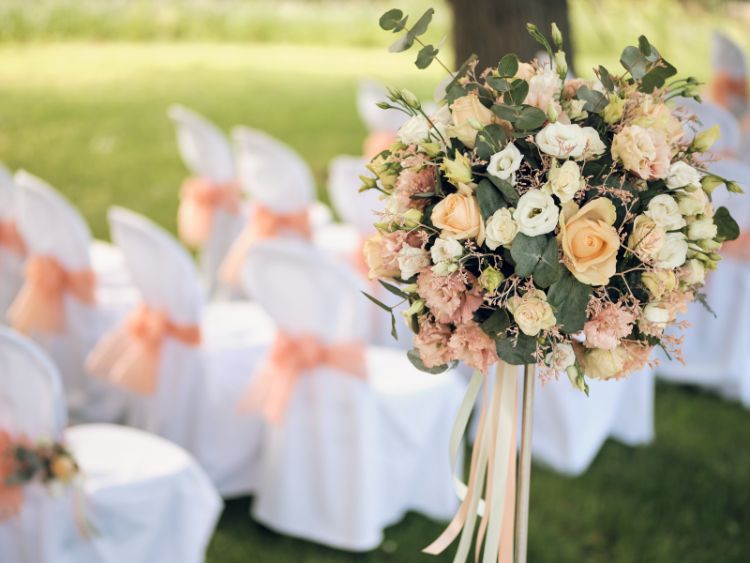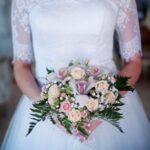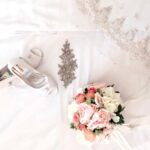Weddings are exciting, but deciphering the dress code? That can be tricky! If you’ve ever stared at an invitation wondering what “dressy casual” or “semi-formal” actually means, you’re not alone. Wedding dress codes are as varied as the events themselves, with each code subtly hinting at a different style, level of formality, and vibe. Don’t worry; this guide breaks down common wedding guest dress codes, giving you tips and ideas on how to put together the perfect outfit for every type of celebration. So let’s dive in and take the guesswork out of getting dressed!
Table of Contents
- Why Wedding Guest Dress Codes Matter
- Popular Wedding Dress Codes Explained
- Traditional vs. Modern Dress Codes
- Dress Code Guide for Men and Women
- Seasonal Dress Code Tips
- Wedding Etiquette: Dos and Don’ts
- FAQs about Wedding Guest Dress Codes
- Summary and Key Takeaways
1. Why Wedding Guest Dress Codes Matter
Dress codes aren’t just suggestions; they set the tone and formality of the entire event. When a couple includes a dress code on their invitation, it’s a thoughtful hint about the kind of celebration they envision. Adhering to the wedding guest dress code shows respect for the couple’s wishes and helps you fit into the vibe they’ve worked so hard to create. Plus, it ensures you don’t stand out for the wrong reasons.
2. Popular Wedding Dress Codes Explained
2.1 Black Tie
- What it means: A formal, elegant affair, often held in the evening.
- For men: A classic black tuxedo with a black bowtie, white dress shirt, and formal black shoes.
- For women: A floor-length gown or formal cocktail dress in dark or jewel tones.
- Tip: Black tie is as formal as it gets for weddings, so when in doubt, dress up rather than down!
2.2 White Tie
- What it means: The most formal of dress codes, usually reserved for grand, ultra-luxurious events.
- For men: Tailcoat, white vest, white tie, and formal white gloves (optional).
- For women: A full-length ball gown paired with elegant accessories.
- Tip: White tie weddings are rare, but if you get an invite, think of it as an opportunity to go all out.
2.3 Formal or Black Tie Optional
- What it means: Similar to black tie but slightly more flexible. Formal attire is still expected.
- For men: Tuxedo or dark suit with a tie.
- For women: Floor-length dresses are encouraged, but a sophisticated cocktail dress can work.
- Tip: If you’re torn, lean toward a tuxedo or long dress for a polished look.
2.4 Semi-Formal or Cocktail Attire
- What it means: A step below formal but still stylish and dressy.
- For men: Dark suit and tie; dress slacks with a button-down shirt can work if you add a blazer.
- For women: A cocktail dress, dressy skirt and blouse, or a jumpsuit.
- Tip: Semi-formal gives you the freedom to go chic without the constraints of full formalwear.
2.5 Casual or Dressy Casual
- What it means: This relaxed dress code is typical for daytime or beach weddings.
- For men: Chinos, dress slacks, or even smart jeans with a button-up shirt.
- For women: A sundress, skirt with a nice blouse, or jumpsuit.
- Tip: Casual doesn’t mean sloppy. Aim for neat, clean, and polished, even if it’s laid-back.
2.6 Beach Formal
- What it means: A cross between elegant and beach-appropriate attire.
- For men: Lightweight linen or cotton suit, loafers or dress sandals.
- For women: A flowy maxi dress, beach-friendly accessories, and chic flats or wedges.
- Tip: Fabrics like linen and cotton keep you cool, while dressy details keep it elegant.
3. Traditional vs. Modern Dress Codes
Some couples opt for traditional dress codes, while others might throw in modern twists like “festival chic” or “bohemian glam.” In these cases, go for:
- Festival Chic: Think bold colors, eclectic patterns, and stylish yet relaxed fits.
- Bohemian Glam: Long, flowing dresses, natural fabrics, and a mix of casual elegance.
Modern codes allow for creativity but remember to keep it classy—after all, it’s still a wedding!
4. Dress Code Guide for Men and Women
Here’s a cheat sheet for choosing the perfect outfit based on popular wedding guest dress codes:
| Dress Code | Men’s Attire | Women’s Attire |
| White Tie | Tailcoat, white tie, vest | Full-length ball gown |
| Black Tie | Tuxedo, black bow tie | Floor-length gown, formal cocktail dress |
| Formal | Tuxedo or dark suit | Long dress, dressy cocktail dress |
| Semi-Formal | Suit and tie | Cocktail dress, dressy separates |
| Casual | Chinos, button-down shirt | Sundress, jumpsuit |
| Beach Formal | Linen suit, dress sandals | Maxi dress, flats, beach-appropriate |
5. Seasonal Dress Code Tips
Seasons can make a big difference when it comes to dressing for a wedding. Here are some general tips to keep in mind:
- Spring: Light colors and pastels are a great choice. Fabrics like chiffon or silk work well.
- Summer: Go for lightweight fabrics like linen, especially for outdoor weddings. Avoid dark colors, which can get hot.
- Fall: Jewel tones and warm shades like burgundy or emerald green work beautifully in the fall.
- Winter: Opt for darker colors, heavier fabrics like velvet or wool, and add a stylish coat if needed.
6. Wedding Etiquette: Dos and Don’ts
Following wedding guest dress codes is essential, but other etiquette rules help too:
- Do respect the couple’s wishes: If they specify no white, steer clear! White is traditionally reserved for the bride.
- Don’t go too casual: Even for a casual wedding, avoid anything too relaxed like ripped jeans or flip-flops.
- Do check with the couple if unsure: If the dress code is unclear, it’s okay to ask. It shows you care.
- Don’t forget comfort: You’ll likely be standing, sitting, and dancing, so pick something comfortable.
7. FAQs about Wedding Guest Dress Codes
Q: Can I wear white to a wedding if it’s not specified in the dress code?
A: Generally, it’s best to avoid white unless the couple explicitly states it’s okay. White is traditionally reserved for the bride.
Q: What if the invitation doesn’t specify a dress code?
A: If there’s no dress code, consider the time and location. Evening events tend to be more formal, while daytime weddings are often semi-formal or casual.
Q: How do I know if my outfit is too bold for a wedding?
A: Bold colors are okay, but avoid anything that could outshine the couple. Steer clear of overly flashy or revealing clothing.
Q: Can I wear jeans to a wedding with a casual dress code?
A: If it’s explicitly casual, dark, neat jeans may be acceptable, but pairing them with a blazer or dressy top adds polish.
Summary and Key Takeaways
Navigating wedding guest dress codes doesn’t have to be confusing! When in doubt, lean toward dressing slightly more formally, respect any specific requests from the couple, and choose attire that aligns with the season and setting. Remember, the goal is to fit in and celebrate the occasion, so aim to look polished and respectful. With this guide, you’re set to handle any dress code with confidence, grace, and a bit of style!



